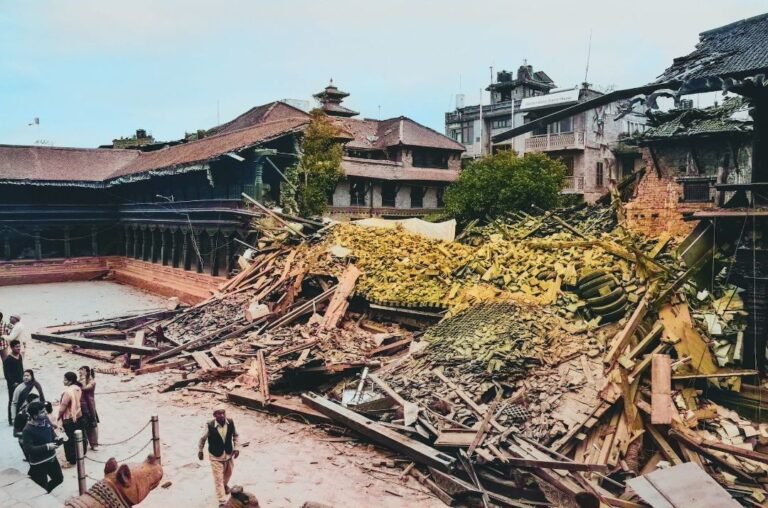THE
QUAKE
The disaster, the victims and what to do in case of an earthquake
SCROLLDOWN
Earthquakes happen without warning
and at any time
BUT HOW?
The outer layer of the Earth is made up of nine major tectonic plates that are constantly moving and rubbing against each other. When their contact is broken, an earthquake begins.
On average,
about 55 earthquakes occur every day.
Richter scale
The Richter scale is a measure of the magnitude of an earthquake. It was developed in 1935 by Charles F. Richter.
The seismometer is built from a weight that hangs on a spring. The earthquake shakes the device fixed to the ground and causes the barbell to swing. The intensity of the tremor was previously recorded on paper, and today it is recorded on a computer.
SIDE
EFFECTS
Earthquakes themselves are not dangerous, but their side effects can be devastating.
Here are some of the most prominent of them:
TSUNAMI
Most tsunamis are caused by large earthquakes below or near the ocean floor
FIRE
Earthquake fires start when electrical and gas lines are dislodged due to the earth's shaking
Volcanic eruption
volcanoes can be triggered into eruption by nearby tectonic earthquakes if they are already poised to erupt
Landslidesand sinkholes
When an earthquake occurs, the transmission of seismic waves can cause shaking and vibration of ground surface. This often trigger the collapse of potential landslide areas, which is known as earthquake-induced landslide.
Hazardous Materialsleakage
factories where there are hazardous materials can be damaged and sometimes collapse and can cause an additional significant damage to that caused by the earthquake.
infrastructuredisconnection
Millions of citizens could be left without electricity as a result of an earthquake
History's most
notable earthquakes

The earthquake that struck near Valdivia, Chile, in 1960 was the most powerful temblor in recorded history. The quake left two million people homeless, injured at least 3,000, and killed approximately 1,655. (nationalgeographic.org)
1960

One of the deadliest earthquakes of modern times occurred in the Indian Ocean (also called the 2004 tsunami). Approximately 280 thousand people were killed by these waves, thousands were injured, and many villages were destroyed. (wikipedia)
2004

2008
On May 12, 2008, a massive earthquake hit the mountainous central region of Sichuan province in southwestern China. The epicentre of the magnitude-7.9 quake was located near the city of Dujiangyan. Whole schools, villages, and towns were destroyed. Almost 90,000 people were counted dead or missing. (britannica.com)

2010
In January 2010, a large earthquake struck Haiti and the Dominican Republic on the West Indian island of Hispaniola. According to the Haitian government, more than 300,000 people died, but other estimates were much lower. More than a hundred thousand survivors were forced to leave their homes. (britannica.com)
Nepal earthquake, also called Gorkha earthquake, severe earthquake that struck near the city of Kathmandu in central Nepal on April 25, 2015. About 9,000 people were killed, many thousands more were injured, and more than 600,000 structures in Kathmandu and other nearby towns were either damaged or destroyed. (britannica.com)
2015

Prevention and defense
Did you know?
As a standard, once an hour all the rescue teams stop all devices and stay quiet so they can try to hear if there are trapped people crying for help.
#stay_safe
©2023 | thequake.info | Yoni Kessler & Yehuda Bruck
The content on this website is unofficial. To get the official information contact the local authorities in your country.
photos and content from: wikipedia, shutterstock, nationalgeographic.org, britannica.com,
서울특별시 소방재난본부, CC BY-SA 4.0, via Wikimedia Commons | English: Master Sgt. Jeremy Lock, Public domain, via Wikimedia Commons news website design
